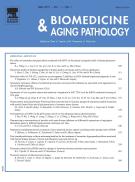Application of chitosan and herbal nanocomposites to develop antibacterial medical textile - 27/02/14
 , S. Vijayakumar a, ⁎
, S. Vijayakumar a, ⁎  , R. Rajendran b
, R. Rajendran bAbstract |
Aim |
To enhance the efficiency of biological, chemical and physical properties like antibacterial activity, wash durability, air-permeability and biocompatibility, cotton fabric materials were finished with chitosan and herbal nanocomposites.
Methodology |
Extracts of Senna auriculata and Achyranthes aspera with chitosan solution was bulk finished on 40 cotton fabrics. To increase the functional properties, chitosan and herbal extract nanocomposites were finished on to another set of fabrics (nanocomposite finishing). Different functional properties were carried out for both the sets of fabrics and comparatively analyzed. Antibacterial activity was carried out using standard EN ISO 20645 method and durability of finished fabrics was done using a standard AATCC–124 test method. Physical properties like tensile strength, abrasion resistance and air-permeability were analyzed using the standards, ASTM D 5035-2006, AATCC 119-2004 and ASTM D 737-1996 respectively. Biocompatible properties of the finished fabric were determined by HET-CAM to ensure that material do not cause irritation points on skin surface.
Results |
Antibacterial activity of nanocomposite finished fabrics showed more inhibitory zones of 31mm for E. coli and 29mm for S. aureus when compared to bulk finished fabrics. Nanocomposite finished fabrics showed good durable properties and physical properties than bulk finished fabrics. Bulk and nanocomposite finished fabrics showed good biocompatible properties when analyzed using a standard HET-CAM test.
Conclusion |
The study concludes that, nanocomposites could provide better functional properties than the bulk finished fabrics. The nano-sized particles in the composites was considered significant for its functional applications in hospital based fabrics to prevent the transmission of nosocomial infections.
El texto completo de este artículo está disponible en PDF.Keywords : Chitosan, Coacervation, Biocompatible, Nanoparticles, Air-permeability
Esquema
Vol 4 - N° 1
P. 59-64 - janvier 2014 Regresar al númeroBienvenido a EM-consulte, la referencia de los profesionales de la salud.
El acceso al texto completo de este artículo requiere una suscripción.
¿Ya suscrito a @@106933@@ revista ?

